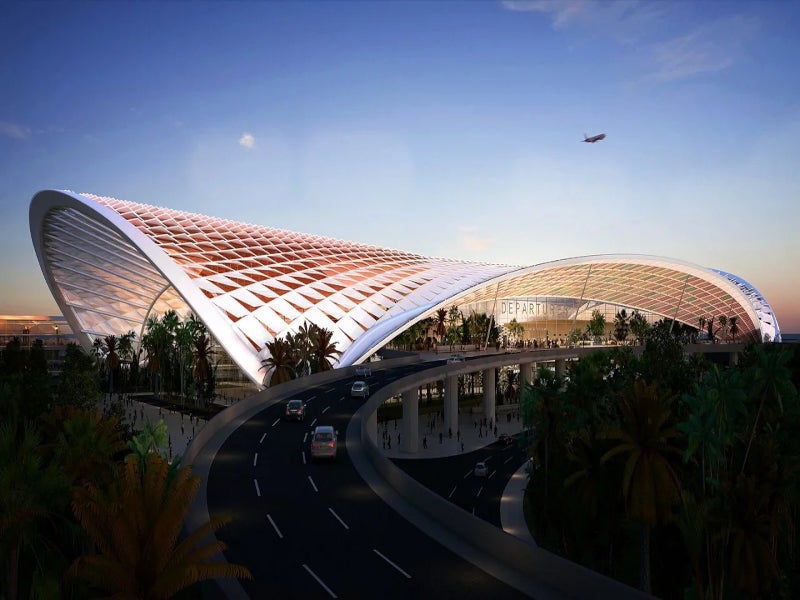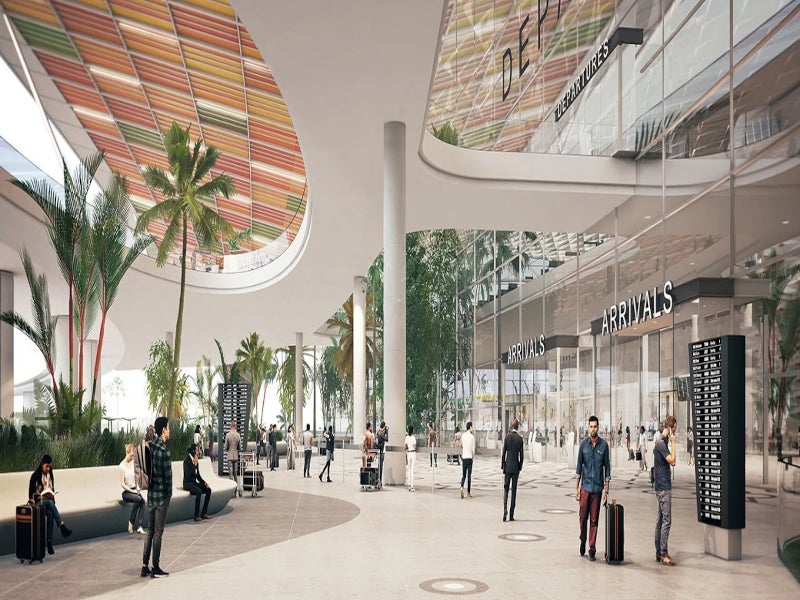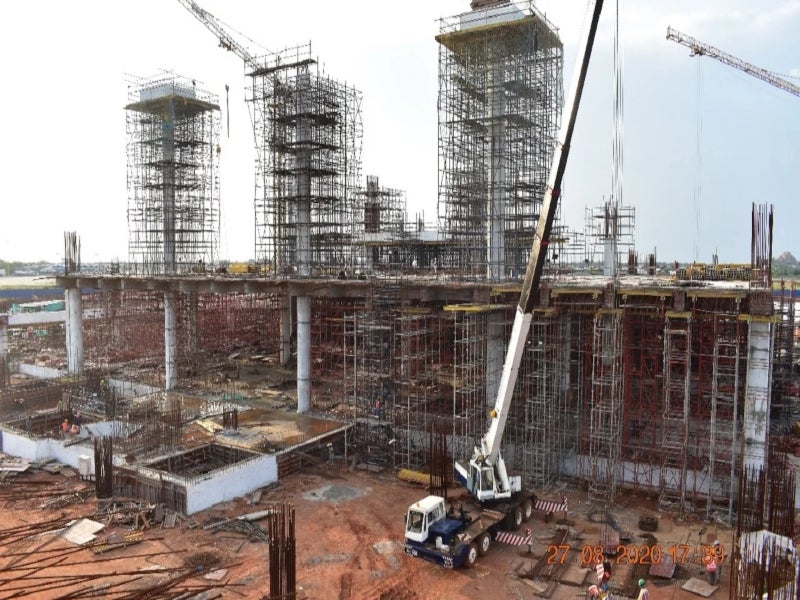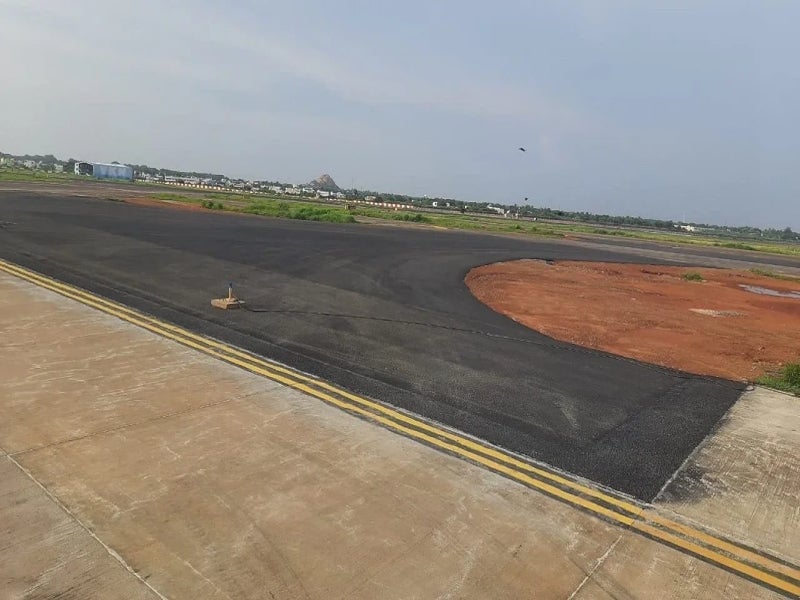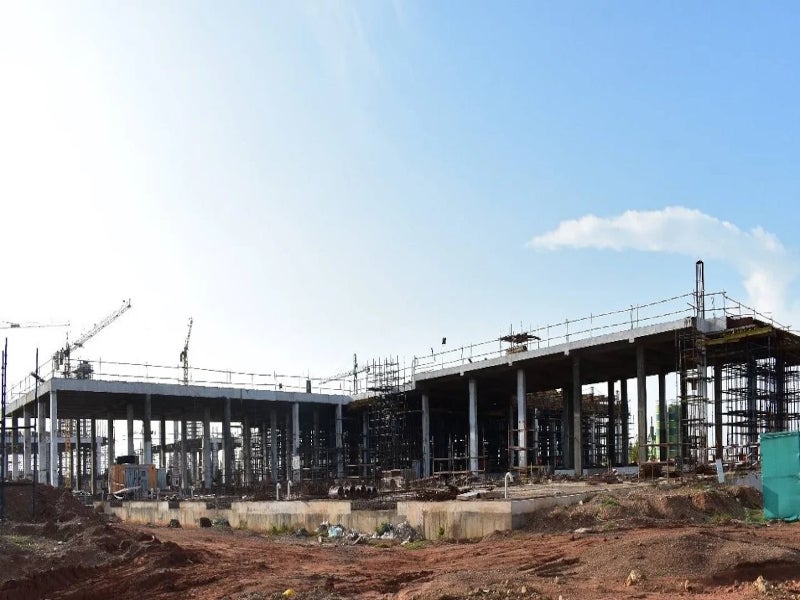Tiruchirapalli International Airport is located in Tiruchirapalli, Tamil Nadu, India, approximately 325km away from Chennai.
Also referred to as the Trichy International Airport, it is state-owned and operated by the Airports Authority of India (AAI).
A new integrated passenger terminal building was inaugurated at the airport in January 2024.
The expansion of the Indian airport addressed the increasing passenger demand and offered a comfortable travel experience for passengers.
Tiruchirapalli International Airport expansion project details
The construction of the new terminal building began with a ground-breaking ceremony held in February 2019. The project was aimed at reducing congestion at the airport during peak hours and accommodating 3.52 million passengers by 2025-2026.
The new integrated terminal is a two-storeyed building alongside the runway. With a built-up area of 75,000m², it can accommodate 3,500 international passengers during peak hours.
The terminal building is characterised by a dynamic and dramatic form complemented by a majestic roof. The fully air-conditioned interiors showcase the vibrant colours and rich culture of the city, employing contemporary materials and textures.
The layout features 60 check-in desks, five baggage carousels, and advanced security features, including 19 X-BIS machines, to ensure a seamless passenger experience.
It prioritises comfort and convenience with 60 arrival and 44 departure immigration desks, lounges, and a variety of food and beverage stores.
The new terminal can accommodate more than 4.5 million people each year, up from 1.5 million previously.
The expansion project also included the construction of a new apron, an air traffic control (ATC) tower, and other airside facilities.
Sustainability features
The building is designed to attain the Green Rating for Integrated Habitat Assessment (GRIHA) four-star rating for its sustainable features.
Each component of the building has been constructed with sustainability in mind, incorporating energy-efficient canopies and LED lighting to low heat-gain double-glazing units and extensive landscaping with local plants.
The new ATC tower as part of the project includes a control room, automation facilities, very high frequency (VHF), AAI offices, and meteorological offices equipped with heating, ventilation, and air-conditioning (HVAC) systems.
The integration of technologies such as HVAC, water treatment, sewage treatment plants, rainwater collection, ground source heat pumps and a solar power plant demonstrates the company’s zeal for sustainability.
The striking roof and multi-layered facade bring more natural light into the building and the landscaped gardens are designed to provide a calming backdrop.
Infrastructure details
A multi-level car parking area with space for 750 cars, 250 taxis, and ten buses was constructed along with residential quarters for AAI and Central Industrial Security Force (CISF) employees.
In addition to the new apron, the expansion project involved the construction of associated taxiways, supporting equipment rooms, and the installation of terminal radar and radar simulation.
An isolation bay was built to make the airport suitable for multiple apron ramp systems, which comprise five wide-body (code-E) and ten narrow-body (code-C) aircraft.
Additionally, it involved the development of a four-lane elevated access road connecting the terminal building to the city.
Details of the existing facilities
Covering an area of more than 702 acres, Tiruchirapalli International Airport features two passenger terminal buildings, a runway, a cargo terminal building, a cold room facility, an apron, taxiways, and associated infrastructure.
The existing terminal buildings are located adjacent to each other. The old terminal building is currently used for international cargo operations. It was converted into a 43,000ft² (4,000m²) international cargo terminal in November 2011. It has the capacity to hold up to 250t of cargo.
The integrated passenger terminal building handles international and domestic passenger operations. Opened to traffic in June 2009, the terminal has an area of 11,777m². The annual passenger handling capacity of the terminal is 490,000 passengers.
Runways at Tiruchirapalli Airport
The single asphalt-laid runway at the airport is designated as Runway 09/27. It has a length of 7,963ft (2,427m) and a width of 45m. It is capable of handling Airbus 320 and Boeing 737-800 aircraft in all weather conditions. The runway is also permitted to handle night operations.
The apron area of the airport features seven bays while the taxiways are spread across 5.64 acres. The airport is served by a multi-level car parking facility with a capacity to accommodate more than 350 vehicles.
Financing
The expansion project was funded by the Government of India through AAI. The government approved Rs9.51bn ($134.2m) in funding, including Rs5.64bn ($79.63m) for the terminal building. The remaining financing was used for the development of associated infrastructure.
Contractors involved
AAI selected Egis, a consulting, construction engineering and operating company, as the design and project management consultant (PMC) for the expansion project in June 2017. Egis was responsible for delivering detailed design and planning services for the project.
It was in charge of constructing the new integrated passenger terminal building, elevated highways, and all associated work.
Pascall & Watson, an architectural company, was responsible for the concept design of the new passenger terminal at the airport.

